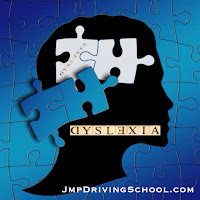Dyslexia - Adaptive Driver Education for Dyslexic Drivers
Driving is a skill that empowers individuals with the freedom to explore the world, and for those with dyslexia, learning to drive can be a unique challenge. Dyslexia, a learning difference that affects reading, writing, and spelling, can present obstacles when it comes to processing information quickly on the road. This article aims to provide valuable tips and strategies for teaching people with dyslexia how to drive safely and confidently.
1- Understanding Dyslexia and Driving
Before exploring into tips, it's crucial to understand how dyslexia may impact someone behind the wheel. Individuals with dyslexia may struggle with processing written information quickly, which can be a concern when reading road signs, maps, including GPS directions. Additionally, dyslexia may affect attention to detail and time management, both vital aspects for safe driving. Important note: dyslexia doesn't impact intelligence or motor skills of the person, meaning that having the correct techniques and strategies, individuals can become proficient and safe drivers.
2- Choose an Understanding Instructor
When teaching someone with dyslexia to drive, the choice of instructor matters significantly. Find an instructor who is patient, empathetic, and experienced in teaching individuals with learning differences. Finding a supportive instructor can create a comfortable learning environment, helping the student build confidence behind the wheel. An instructor of this caliber should be able to adapt their teaching style to accommodate the unique needs of the learner, fostering a positive and encouraging atmosphere, knowing how to push the student out of the comfort zone to get and develop the skills and knowledge needed to navigate safely alone.
3- Visual and Hands-On Learning
Given that dyslexia often involves strong visual and hands-on learning preferences, tailor your teaching approach accordingly. Use visual aids, diagrams, and practical demonstrations to explain traffic rules and driving techniques. Encouraging hands-on practice in various driving situations to build muscle memory and confidence is important for the new driver. For instance, starting to drive in areas with low traffic conditions can be particularly helpful for creating a controlled environment where learners can gain confidence without the stress of heavy traffic, and gradually increase the exposure to heavier traffic conditions.
4- Break Down Complex Tasks
Driving involves numerous complex tasks, such as merging onto highways, navigating intersections, parking and others. For someone with dyslexia, breaking down these tasks into smaller, manageable steps can make the learning process less overwhelming. By focusing on one skill at a time, will help the new driver building competence gradually. Also, encouraging an open communication between the learner and instructor, will allow the learner to express their concerns and challenges, thus tailoring the lessons to their specific needs is vital to keep the learners with the motivation to keep moving forward.
5- Utilize Assistive Technology
Nowadays, technology offers valuable tools for drivers with dyslexia. For instance, the use of GPS navigation systems with clear voice instructions, will and can alleviate the need to read complicated maps or street signs for dyslexic drivers. Most smartphone apps are now equipped to provide real-time traffic information and clear voice instructions, helping drivers with dyslexia plan routes and anticipate potential obstacles on the road. Familiarize the learner with these technologies to enhance their confidence and independence as drivers is important for the well being of all motorists sharing the road.
6- Build Confidence Through Practice and Positive Reinforcement
Building confidence is a crucial aspect of teaching individuals with dyslexia to drive. Encourage regular practice in various driving conditions, gradually increasing the complexity of routes. Using positive reinforcement to acknowledge achievements (no matter how small), and providing the correct approach to help them fix the mistakes is crucial for this task.
Celebrate milestones achieved without spoiling the learners character is important. Confidence is often the key to overcoming anxiety related to driving, so fostering a sense of accomplishment can be a powerful motivator. Remember, becoming a skilled driver is a journey, and it's okay to make mistakes along the way, the goal is to use those mistakes is an opportunity for growth and improvement.
Teaching individuals with dyslexia to drive is a journey that requires patience, understanding, and adaptability. By choosing the right instructor, incorporating visual and hands-on learning, breaking down complex tasks, and utilizing assistive technology, can empower someone with dyslexia to become a safe and confident driver. Everyone's progress is unique, so celebrate each milestone achieved on the road to independence. Safe driving is not just about following the rules; it's also about embracing differences and ensuring that all individuals can enjoy the freedom of the open road.
JMP Driving School, is a leading company located in Miami, FL with over 25 years of experience helping customers to get their learner's permit, offering driving lessons making our roads safer one student at a time, and helping drivers to keep their driving records clean when they get traffic citations.




Comments
Post a Comment